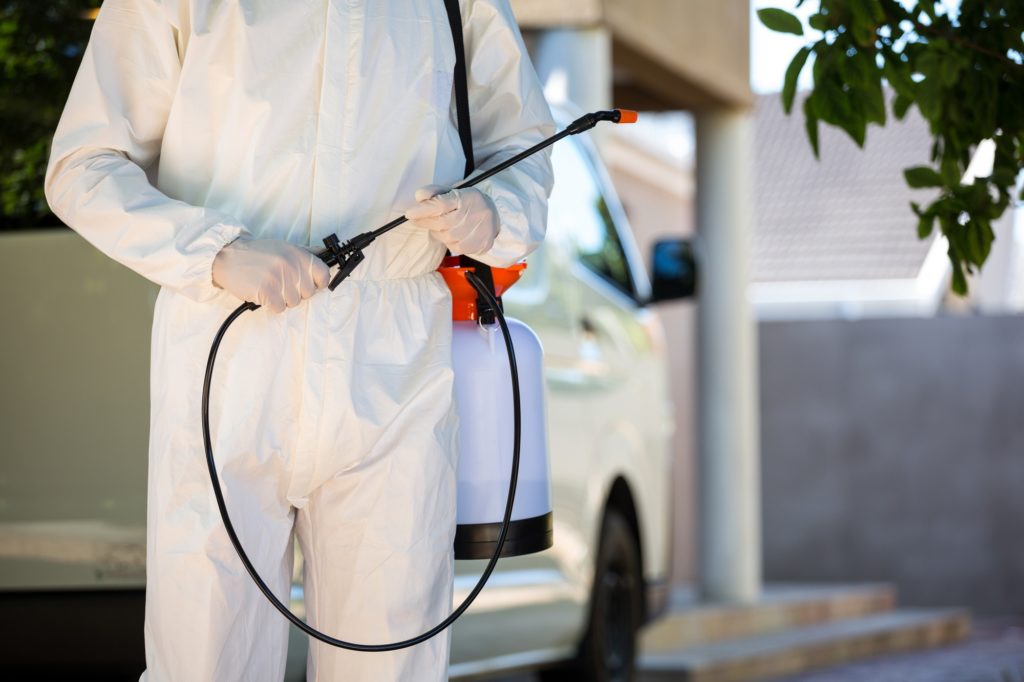
How to Get Rid of Larder Beetles?
Do you have a serious larder beetle problem and don’t know what to do to get rid of them? Here’s what you should know about pest control for larder beetles and how to treat the infestation.
Are you facing a pest infestation in your home, and you think it could be Larder Beetles? You’re not alone. These beetles are a common problem in many households throughout the country.
Before trying to eradicate these beetles, you’ll want to make sure that they’re truly Larder Beetles and not another pantry pest. Fortunately, we’ve made a guide that goes over everything you need to know about these insects.
What Are Larder Beetles?
Larder Beetles are a common pest that makes their way into your home and hide in your stored food items, pet food, furs, and various other animal products. These pests are most problematic during the cold months of winter and early spring when the females lay their eggs.
Larder Beetles are oval-shaped and about ⅓” in length, with dark brown bodies and a yellowish band around the midsection. These insects have fine yellow hairs that cover their wings and legs.
Larder Beetle larvae have worm-shaped bodies and are about ½” in length. They have light brown bodies covered in small yellow hairs, and they have a set of small pincers at the end:
Larder Beetle Diet
Larder Beetles will hide and lay eggs near their sources of food, which are primarily animal products. Meats, cheeses, dry pet food, furs, and taxidermy trophies are the most prominent sources of food for these pests.
They can also feed off rotting flesh from any dead animals that may be in the walls or attic of your home, like mice, rats, or other insects.
How Much Damage Can They Cause?
Larder Beetles don’t bite or sting, but they are very unsanitary and can cause damage to your home and belongings.

When Larder Beetles are in their pupal stage, they tend to burrow into solid materials, such as the wood in your house, or stored food products.
Most damage from these beetles comes from whatever they’ve contaminated. However, if there are thousands of Larder Beetles, they can cause significant damage to the structure of your home.
This may seem unlikely, but when each female can lay up to 800 eggs a time, their population grows rapidly.
Understanding the Larder Beetle Life Cycle
The Larder Beetle life span typically lasts between 40 and 50 days, and most of it is spent in their larvae stage. Once a female lays eggs, they take about 12 days to hatch, and then each baby Larder Beetle will feed on their food source and burrow somewhere to hide.
The Larder Beetle larvae will molt about five times while growing, which takes about 19 days. Then, they’ll pupate for another 5 days and become a fully grown adult. Once they’re fully grown, they’ll begin to look for mates to reproduce and start the cycle over again.
Signs of a Larder Beetle Infestation
If you think your home has a Larder Beetle infestation, you’ll want to do a thorough inspection before trying to eradicate them. You’ll want to find anything that may be contaminated and throw it away, and you’ll also want to find where they’re coming inside from.
Remember, just because you see an adult Larder Beetle, doesn’t mean you have an infestation. You could come across a single one that made its way into your house and hasn’t contaminated anything yet. It’s best to be safe and check everything in your pantry though.
Some common signs that point to an infestation are their fecal pellets, their molted, hairy skin, and small holes that they’ve chewed in your items. If you’re finding these things throughout your home, it’s safe to say you have an infestation and need a plan to exterminate them.
How to Get Rid of Larder Beetles
Larder Beetles may not be dangerous to people or pets, but they’re still unsanitary and should be exterminated as soon as an infestation is discovered. While there are things you’ll need to do yourself, you should still call an exterminator to make sure that all of the beetles have been eradicated:
Cleaning and Sanitizing
If you’ve discovered a Larder Beetle infestation, you’ll need to dispose of anything that the beetles have contaminated.
Vacuum your shelves and surrounding areas where you’ve found these pests, and be sure to suck up any beetles or larvae you may find too. Afterward, be sure to clean these surfaces with soap and water, or disinfectant wipes.
Hiring Pest Control
There are insecticides and bug traps that will work to kill Larder Beetles, but they most likely won’t get all of them.
If you want to get rid of your infestation for good, you’ll need to hire an exterminator. Exterminators can spray effective insecticides in difficult-to-reach places to kill any beetles and their larvae that are hiding.
How to Prevent an Infestation
Chances are that if you’re reading this, it’s too late for you to prevent a Larder Beetle infestation. However, if it isn’t, then great! If you already have an infestation and you’re trying to get rid of them, keep these tips in mind for keeping your home free of these pesky beetles in the future:
Use Airtight Containers
Larder Beetles are attracted to many items you may have stored in your pantries, such as any food items and pet food. To keep from attracting them, you should store all of your food items in glass, plastic, or metal airtight containers, even products that you haven’t opened yet.
Keep Your Kitchen Clean
Since Larder Beetles are attracted to food, your kitchen is an easy target. You’ll want to keep your kitchen clear of any food scraps and scrub away any grease to avoid attracting any pests.
Seal Up Cracks and Holes
Larder beetles can get into your house from any cracks or holes that lead inside. So if you’ve got an infestation, you’ll want to thoroughly examine your home for any entrances and seal them up with caulk.
Some common places where beetles can get in are in your siding, baseboards, windows, and more.
Reach Out to Us for a Free Estimate
Larder Beetles are an unsanitary nuisance and can end up costing you a lot of money if they contaminate your home. Hopefully, this article gave you the information you needed to determine if you’re dealing with a Larder Beetle infestation.
Larder Beetles can be a major pest, but you don’t have to face them alone. Reach out to us for a free estimate on beetle control costs near you. Hiring a professional is the safest way to eradicate these pests and keep them gone forever.


Leave a Reply